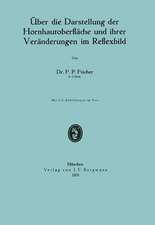Chronic Wound Management: The Significance of Evidence and Technology
Editat de Raj Manien Limba Engleză Paperback – 29 apr 2024
The past decades have yielded reliable evidence-based guidelines and standardized care, but the healing of diabetic foot wounds continues to be unpredictable notwithstanding these advances, while the recurrence rates are also high. The benefits of technology in wound diagnosis are evidence-based and the use of this technology also features in guidelines. However, the same argument cannot be extended to adjuvant devices to facilitate wound closure even though many devices potentially benefit wound healing.
Chronic Wound Management describes how innovation is based on technology that itself informs evidence, the gap between the evidence available, the performance of technology and how do we bridge this gap. It reviews the lessons learnt from the COVID-19 pandemic and whether traditional medicine systems offer us real or imaginary benefits. Consequently, this book is an important addition to the literature in the area and an essential read for all healthcare professionals working with these patients.
| Toate formatele și edițiile | Preț | Express |
|---|---|---|
| Paperback (1) | 640.68 lei 39-44 zile | |
| Springer International Publishing – 29 apr 2024 | 640.68 lei 39-44 zile | |
| Hardback (1) | 1044.50 lei 3-5 săpt. | |
| Springer International Publishing – 28 apr 2023 | 1044.50 lei 3-5 săpt. |
Preț: 640.68 lei
Preț vechi: 674.39 lei
-5% Nou
Puncte Express: 961
Preț estimativ în valută:
122.65€ • 127.97$ • 102.81£
122.65€ • 127.97$ • 102.81£
Carte tipărită la comandă
Livrare economică 10-15 martie
Preluare comenzi: 021 569.72.76
Specificații
ISBN-13: 9783031261121
ISBN-10: 3031261127
Ilustrații: VI, 313 p. 60 illus., 54 illus. in color.
Dimensiuni: 155 x 235 mm
Ediția:2023
Editura: Springer International Publishing
Colecția Springer
Locul publicării:Cham, Switzerland
ISBN-10: 3031261127
Ilustrații: VI, 313 p. 60 illus., 54 illus. in color.
Dimensiuni: 155 x 235 mm
Ediția:2023
Editura: Springer International Publishing
Colecția Springer
Locul publicării:Cham, Switzerland
Cuprins
Foreword.- Introduction.- The role of technology in managing vascular wounds.- The diabetic foot its complications and the mantra for change.- Adjuvants in wound care: Biologic transducers in wound healing.- Adjuvants in wound care: Physical, Electromagnetic, biologic devices.- Role of plant products in wound healing.- Pressure ulcers.- Atypical wounds and wounds resulting from Infection.- Biofilms and impaired wound healing.- Update on technology and evidence-based management of scars.- Surgical Flaps in wound healing.- Wound imaging.- Translation of wound devices into practice.- Chronic wound pain.
Notă biografică
Raj Mani has substantial experience in research and clinical management of chronic wounds; his early work was focused on perfusion and tissue oxygenation which contributed initially to the diagnosis and subsequently to the management of wounds. This work interfaced first with developments in other centers and then with the Cochrane Wounds Group, which led to the establishment of a sound literature-base to mark the start of evidence based wound management. In recent years, he with international peers drew up guidelines for optimizing the use of technology in wound management. This book will address existing gaps in management and discuss probable causes and offer remedies for such gaps.
Dr Mani has contributed to the advancement of wound management through publications in journals, book chapters and books: Raj also initiated the publication of a journal - the International Journal of Lower Extremity Wounds (IJLEW) - of which he was the Editor-in-Chief till 2018. IJLEW whichwas followed by another couple of journals (also from the UK) and books in this field formed a platform from which better clinical management and research from practice developed. This benefited practitioners (Tissue Viability Nurses, Podiatrists, doctors-in-training) as well as Specialists.
Dr Mani worked mostly from the UK though his contributions have been recognized in Asia including China as well as in Europe and USA (through activities of professional societies.
Dr Mani has contributed to the advancement of wound management through publications in journals, book chapters and books: Raj also initiated the publication of a journal - the International Journal of Lower Extremity Wounds (IJLEW) - of which he was the Editor-in-Chief till 2018. IJLEW whichwas followed by another couple of journals (also from the UK) and books in this field formed a platform from which better clinical management and research from practice developed. This benefited practitioners (Tissue Viability Nurses, Podiatrists, doctors-in-training) as well as Specialists.
Dr Mani worked mostly from the UK though his contributions have been recognized in Asia including China as well as in Europe and USA (through activities of professional societies.
Textul de pe ultima copertă
This book describes how chronic wounds follow a completely different healing trajectory to acute wounds and discusses the factors associated with these poor healing trajectories. These factors include age, chronic inflammation, phenotypic changes in such cells as macrophages, fibroblasts, and keratinocytes, colder, alkaline wound milieu, wound related hypoxemia, and diabetes. Other factors implicated include reperfusion injury, poor patient compliance, presence of undiagnosed and therefore unmanaged biofilms and wound pain.
The past decades have yielded reliable evidence-based guidelines and standardized care, but the healing of diabetic foot wounds continues to be unpredictable notwithstanding these advances, while the recurrence rates are also high. The benefits of technology in wound diagnosis are evidence-based and the use of this technology also features in guidelines. However, the same argument cannot be extended to adjuvant devices to facilitate wound closure even though many devices potentially benefit wound healing.
Chronic Wound Management describes how innovation is based on technology that itself informs evidence, the gap between the evidence available, the performance of technology and how do we bridge this gap. It reviews the lessons learnt from the COVID-19 pandemic and whether traditional medicine systems offer us real or imaginary benefits. Consequently, this book is an important addition to the literature in the area and an essential read for all healthcare professionals working with these patients.
Caracteristici
Provides a comprehensive review of management of chronic wounds and reviews the role of infection and biofilms Includes experience of the effects of the COVID-19 pandemic on clinical services Discusses the role of translation in delivering research to dermatology clinics

























